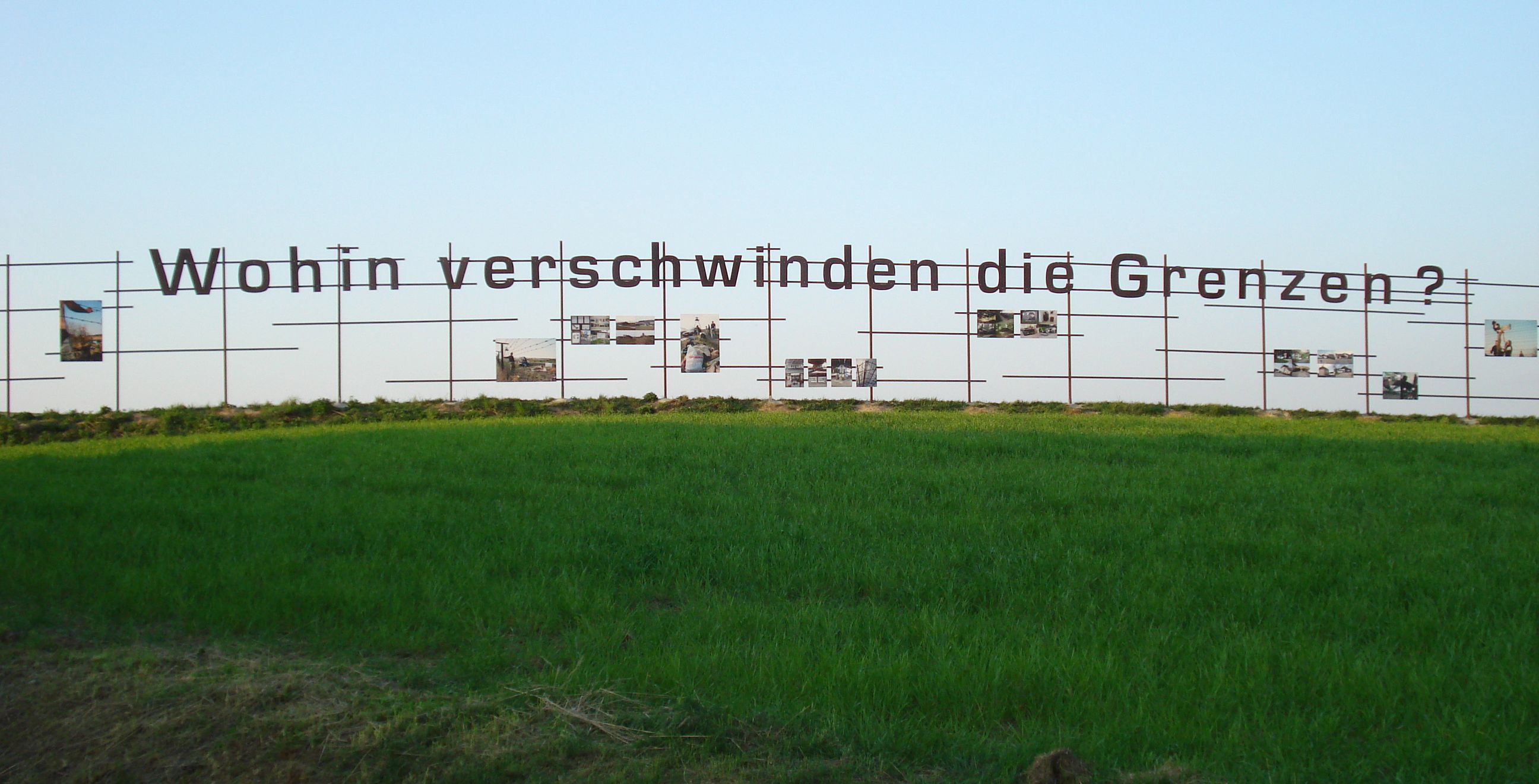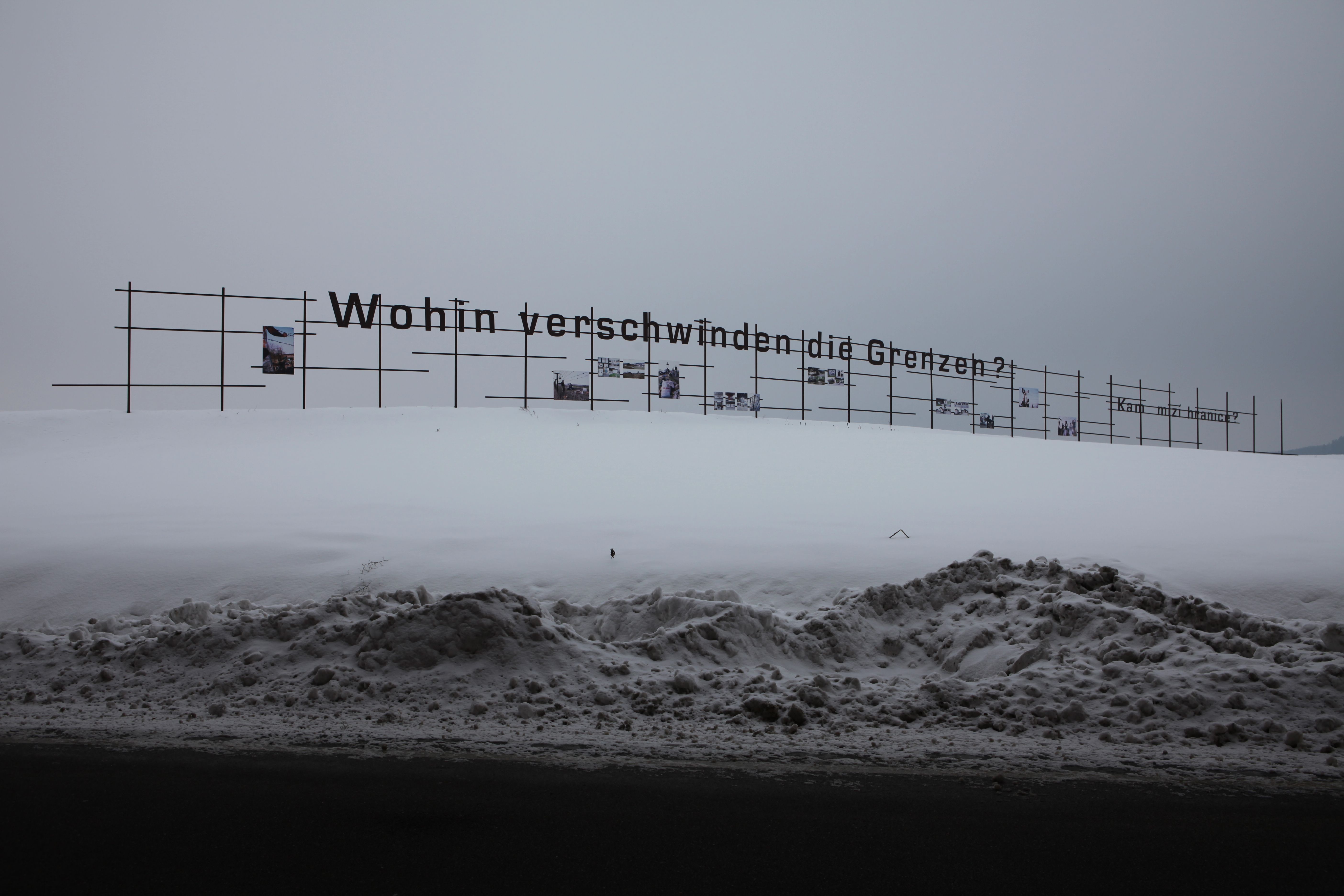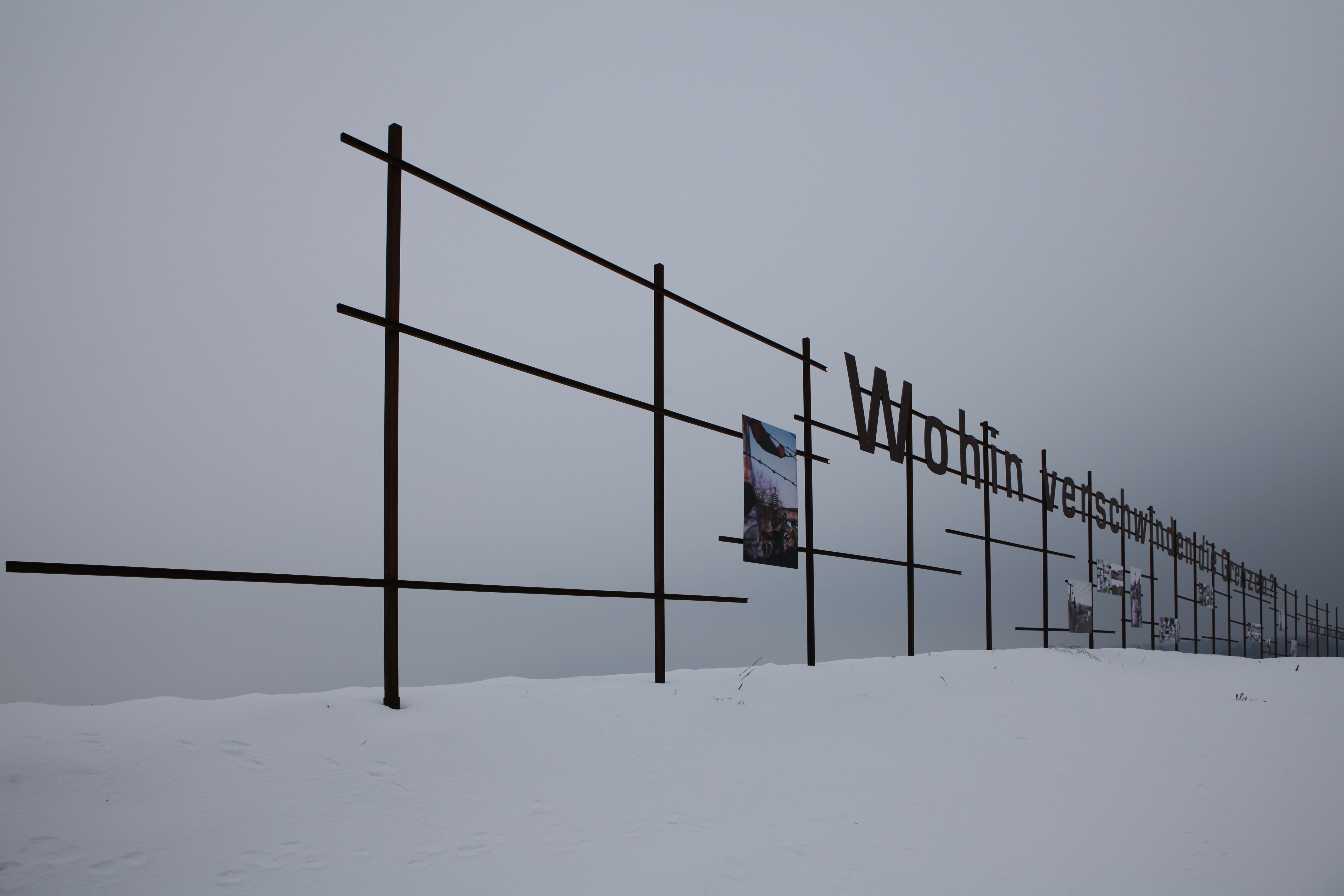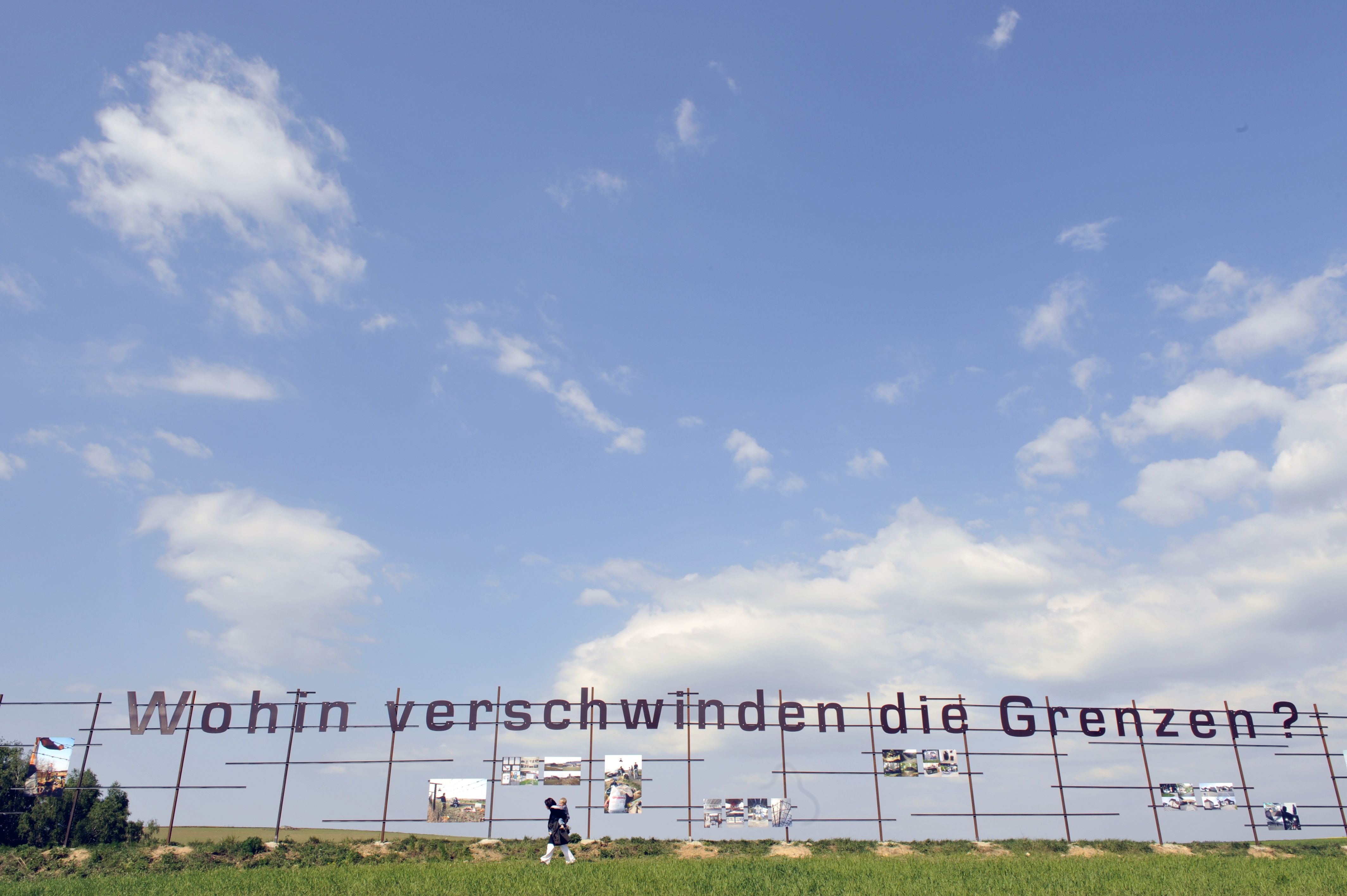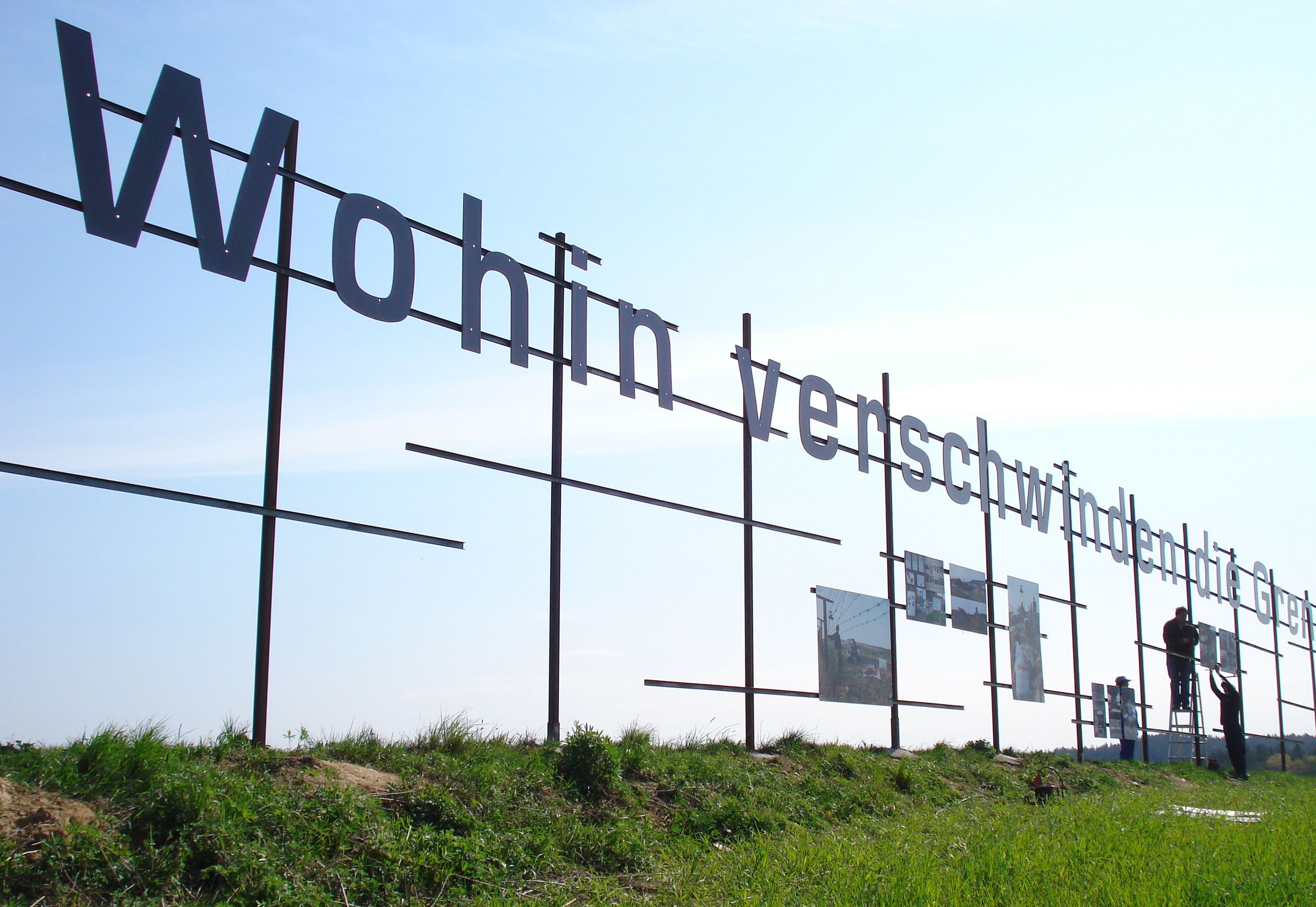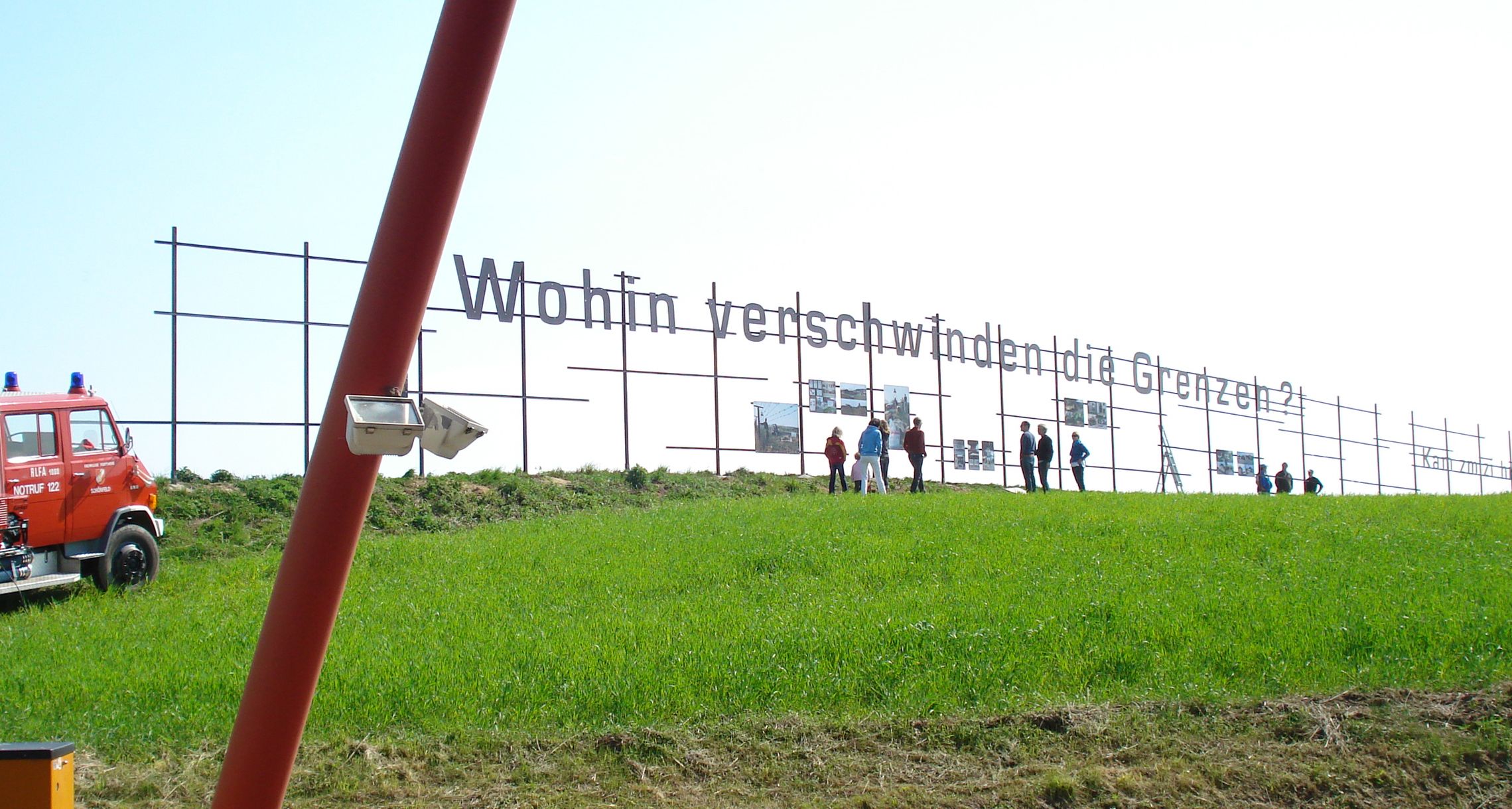Iris Andraschek,
Hubert Lobnig
:
Where Do the Borders Go?
Back
Information
The work 'Wohin verschwinden die Grenzen? — Kam mizí hranice?' (Where Do The Borders Go?) by Iris Andraschek and Hubert Lobnig engages with the geopolitical changes that have occurred in Europe over the past ten years. The consolidation of a European region by levelling former political border zones is at the core of an installation completed in a no-mans-land. Although now at the geographical centre of Europe the area on the Austrian-Czech border is largely isolated — cut-off from and without any connection to urban facilities or supply routes. The lettering bearing the wording of the title is mounted as a large installation reading from left to right heading out of Austrian territory: an allusion to the previous political situation when the Eastern Bloc countries existed by showing that Western Europe had ended here. Even though the Czech Republic joined the EU in 2004 the border crossing remained the outer border to the Schengen countries until 2007, and so was subject to continual policing. With the expansion of the Schengen economic region numerous border stations within the EU lost their original function and became architectural relicts whose symbolical character lies merely in the fact of their existence as buildings today.
---
The situation surrounding the two boarder communities of Fratres and Slavonice was researched and photographed by Andraschek and Lobnig to provide a chain of referential images supplementing the lettering. The research was not only based on the concrete geographical givens but also on the shifting of the borders within a global political order that attempts to regulate immigration and migration as a defining force. While the Fratres/Slavonice border crossing does not represent part of a broader memory in the mass-media, it is primarily photographs depicting events on the borders between Mexico and the USA, North Africa and Lampedusa/Italy or Hungary and the Republic of Serbia that are repeatedly addressed in the media in a context of immigration policy. Andraschek and Lobnig also included photographs of these regions in their panels of images along the lettering as an allusion to the existence of precarious of attempts to flee and international refugee smugglers that are continually at the focus of mass-media interest.
Specific to the local situation in Fratres and Slavonice, the installation engages with the changes in local structures for working and living in a setting that once required heightened policing and security and that has now been reduced to a few routine controls on the border, now heightening exchange between the two communities as passage across the national borders is unhindered. Military facilities in the woodland of the region are commemorative fragments of a historical period that question the meaning of earlier political measures, which is visualised by Andraschek's and Lobnig's artistic signal as a marker in the landscape of the present with its allusion to the altered geopolitical structures.
(Walter Seidl)
Images (6)
